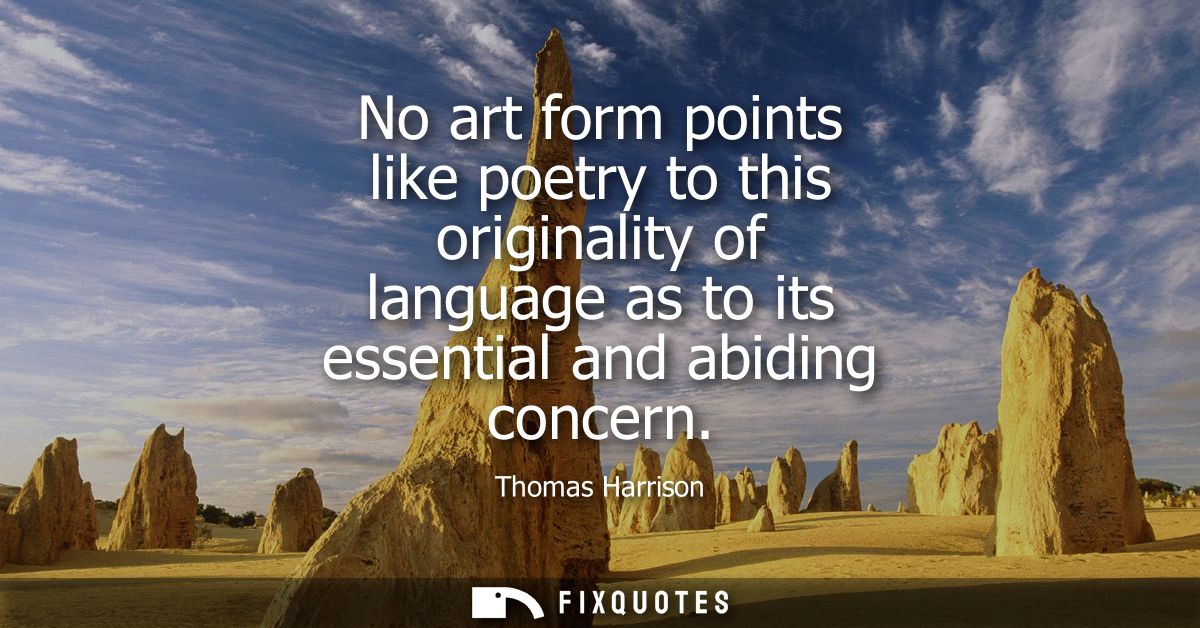"No art form points like poetry to this originality of language as to its essential and abiding concern"
About this Quote
The assertion by Thomas Harrison underscores the unique relationship poetry maintains with the very essence of language, its originality and creative potential. More than any other art form, poetry highlights how language is not merely a communicative tool, but a malleable, dynamic force capable of shaping reality, perception, and human experience. Poetry’s abiding concern, as Harrison suggests, resides in exploring and sustaining the inherent creativity of language, delving into its capacity for innovation, transgression, and transformation.
Unlike music or painting, which employ sound and visual elements, poetry utilizes the nuances of words: their sound, rhythm, etymology, and connotation. It is in the poetic realm that language is most self-consciously manipulated, fractured, rearranged, or revitalized. Poets often set out to exceed the utilitarian boundaries of speech, seeking not only to convey information or emotion but to remake language from within, rendering the mundane strange and the familiar freshly potent. The originality at stake arises not just from novelty or invention, but from the poet’s perpetual engagement with language’s possibilities, the way syntax can surprise, metaphors can jolt or soothe, ambiguity can deepen understanding, and silence itself can become pregnant with meaning.
Moreover, poetry’s "essential and abiding concern" reflects a certain fidelity to linguistic origins, to the spark wherein words generate or alter worlds. The poetic imagination is drawn to what is unformed or on the verge of becoming: the liminal places where meanings slip, coalesce, or expand. Thus, poetry is both a mirror and a crucible for linguistic creation. It reliably houses the ongoing interplay between established usage and radical renewal, reminding us that language is a living art, perennially in the process of being made anew. Poets honor this original nature of language, perpetually pointing back to its roots and forward to its untapped futures.
More details
About the Author

